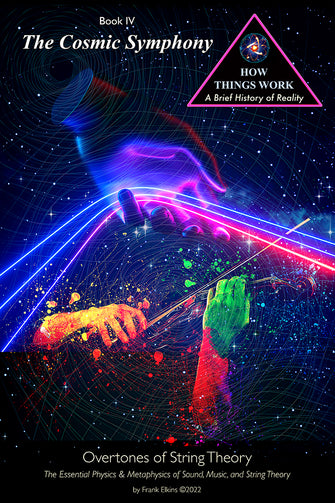
The Cosmic Symphony – Overtones of String Theory (PDF)
The Cosmic Symphony – Overtones of String Theory (PDF)
- Regular price
- $7.95
- Regular price
-
- Sale price
- $7.95
- Unit price
- per
BOOK IV IN THE "HOW THINGS WORK" SERIES (PDF Download)
You might be asking yourself how something so complicated can sound so beautiful? When you listen to a traditional fugue, such as Bach’s Toccata and Fugue in D minor, the music takes on an almost divine nature. This is intentional. This is mathematical. This music is not subjective, it is objective; mathematically designed to bring about the proper response. It is the reason test scores in math have been reported to increase when students study music, or even listen to specific music written by specific composers such as Bach and Mozart.
Pythagoras perceived all of reality to be an expression of abstract mathematics. This mathematical expression was manifested through the vibration of sound which he called The Music of the Spheres. The perceivable manifestations of this cosmology became the science of music as part of “physics.” The imperceivable manifestations became a reflection of pure mathematical abstraction and reasoning as part of his “metaphysics.” Pythagoras developed a complete physical and metaphysical cosmology based on the pure mathematical abstractions of sound. The entire universe was a manifestation of musical vibrations composed of mathematical perfection.
As the limits to Einstein’s theories of relativity became apparent in the new quantum reality, physicists began searching for a new piece of the reality puzzle. That new puzzle piece was String Theory. A “new” theory that proposed the entire universe was a manifestation of vibrations composed of mathematical perfection, a new Music of the Spheres. Democritus’ invisible pieces of indestructible matter were replaced by Pythagoras’ tiny vibrating strings; eternally emanating the cosmic symphony of Reality.
Couldn't load pickup availability
